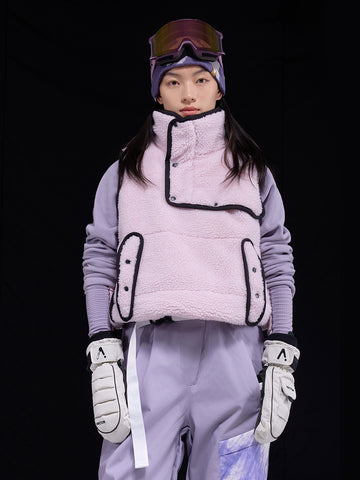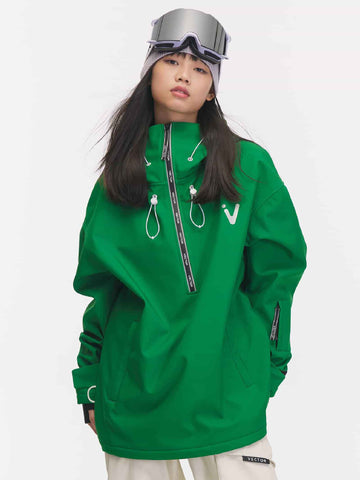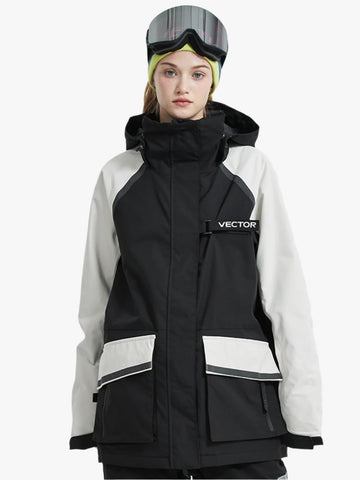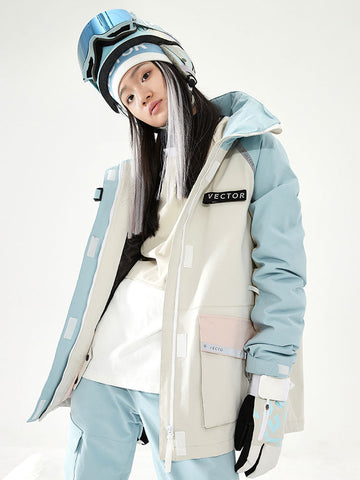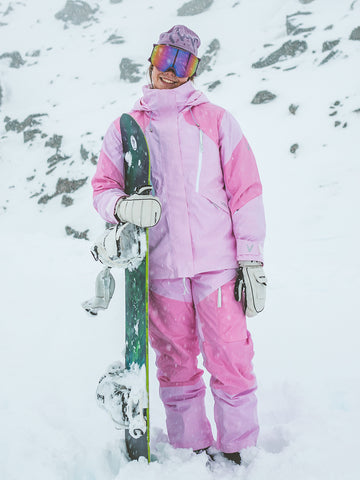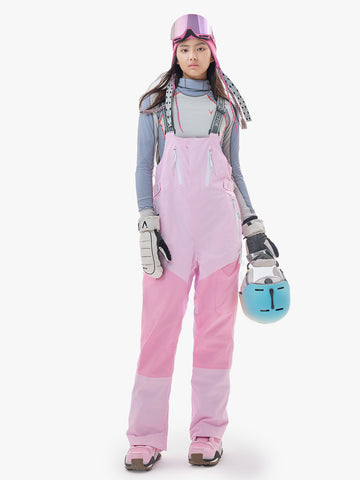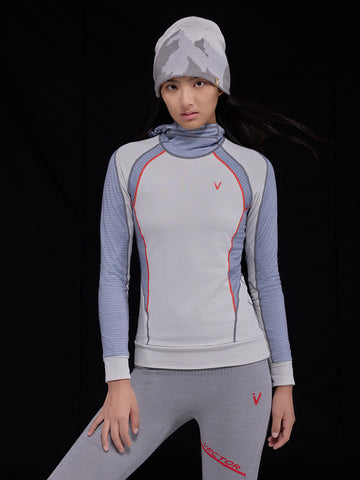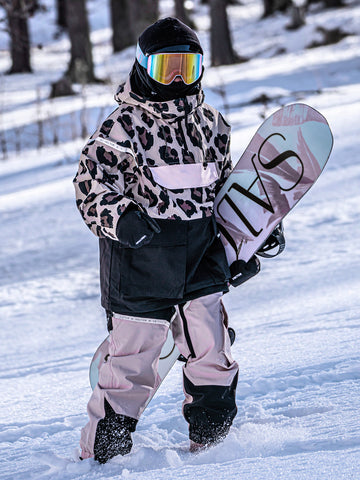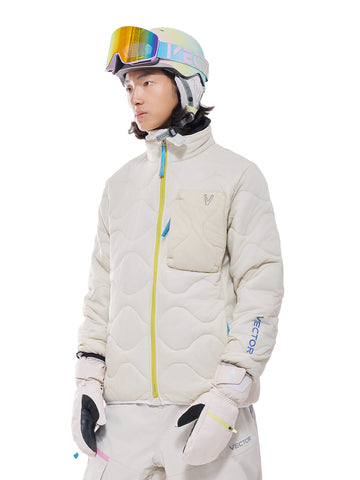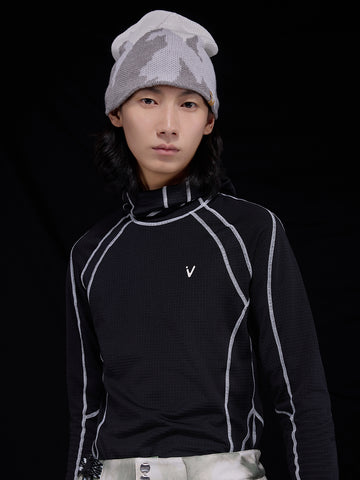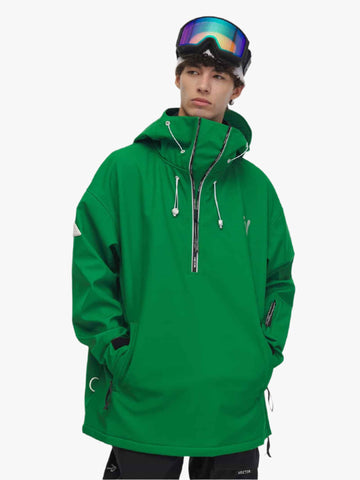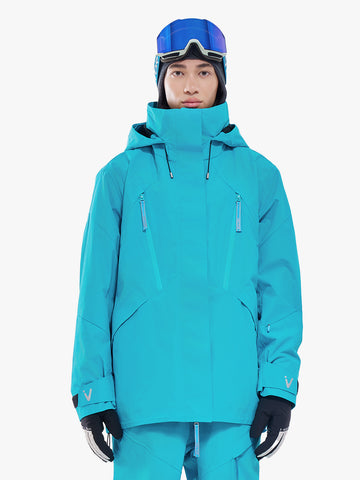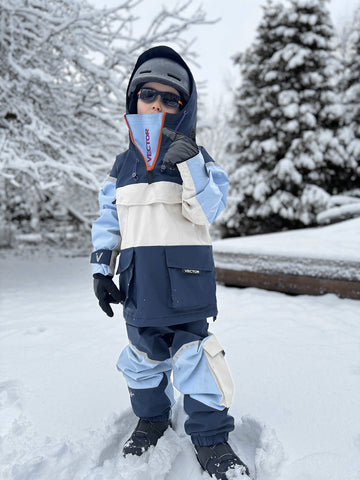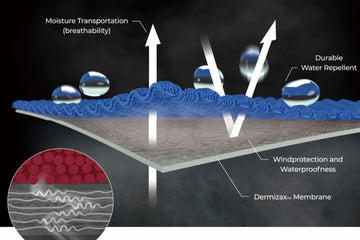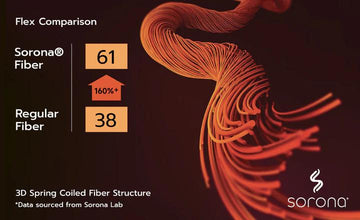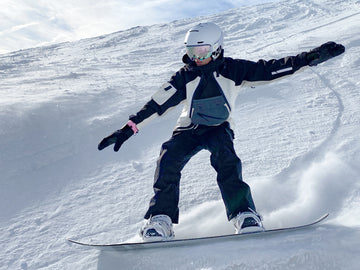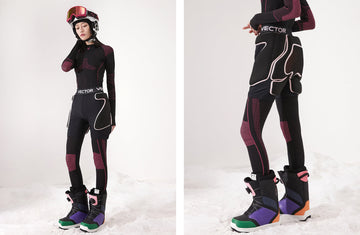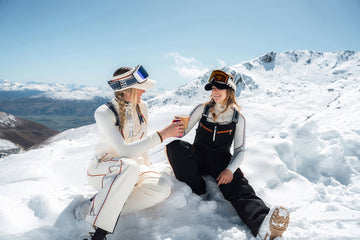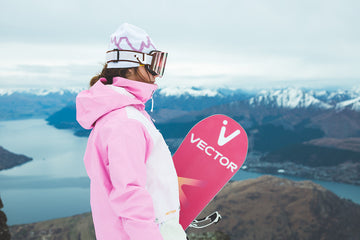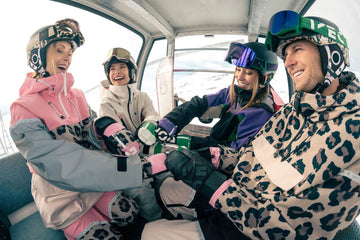Whether you're a beginner or an experienced rider, being prepared for anything you encounter on the slopes is crucial. In this comprehensive guide, we will cover the snow clothes for women you need, and guide you on how to choose the best snowboard helmet, protective gear and other equipment (e.g. snowboarding gloves, goggles etc.) for an exciting experience.
Here will let you know:
- What to Wear for Snowboarding and Skiing: First-Time or Advanced
- How to Layer for Snowboarding and Skiing?
- Helmets and Protective Gear
- Essential Snowboard and Ski Accessories
What to Wear for Snowboarding and Skiing: First-Time or Advanced

For first-time skiing enthusiasts, renting ski suits, snowboards, boots, and bindings at the venue is common. Most ski resorts offer rental services. However, once you discover your love for snowboarding, it's wise to invest in your own equipment.
As a beginner, you'll need a helmet, ski goggles, and quality gloves to help you navigate falls and stay warm in the snow. Purchasing a set of protective gear is highly recommended, as it reduces the risk of injuries, provides ample protection during the learning process, and aids in faster progress.
As your snowboarding skills improve and you seek more excitement, you may consider investing in larger items like fashionable snowboarding jackets and complete accessory sets. This guide will help you understand how to dress for snowboarding and skiing and what you need to purchase.
How to Layer for Snowboarding and Skiing?
The Three-Layer System
When skiing outdoors, the mountain temperature and activity levels can fluctuate significantly. To adapt to these changing conditions, the three-layer system is crucial to keep you warm. The system consists of a base layer, mid layer, and outer layer.
Base Layer

While newcomers worry about feeling cold in the snow, they soon realize that sweating is common during the activity. Wearing wet clothes can be uncomfortable and lead to heat loss. Keeping dry is essential, and a good base layer is a must. It not only provides warmth but also wicks away sweat and regulates body temperature, preventing overheating or excessive cooling.
Mid Layer
Although snowboarding can generate body heat, sitting on a chairlift without movement can quickly cool down the body. The mid layer serves as an additional insulating layer to keep you warm. If you are feeling too warm, you can easily remove it. Choose clothing made of fleece, hoodies, wool, or other warm materials. Consider vest-style options to ensure unrestricted arm movements.
Outer Layer
Snowboard and Ski Jackets

When it comes to upper body attire, it should allow easy breathing while protecting you from wind, water, and other conditions. Snowboard or ski jackets are popular choices, and it's important to layer properly as mentioned earlier.
Shop VECTOR Snowboard & Ski Jackets
Snowboard and Ski Pants
Every part of your body deserves the same level of protection. Snowboard and ski pants should be waterproof that won't get soaked as you might be falling or sitting down in the snow. Avoid jeans as they limit flexibility andwill leave you cold and wet.
Shop VECTOR Snowboard & Ski Pants
Helmets and Protective Gear
Helmets
The most critical piece of gear is a helmet. Investing in your own helmet is preferable to renting one, as it offers better comfort, safety, and cleanliness. A helmet protects your head during falls while also providing superior warmth compared to a hat. Look for snowboard helmets with recognized safety certifications for optimal protection. Ensure a proper fit by trying it on beforehand. The helmet should fit snugly and feel comfortable.
Protective Gears
Protective gear is essential for snowboarding, regardless of skill level. Even beginners with suitable boards can experience severe falls, so a good set of protective gear is crucial. Hip and knee pads are commonly used and highly recommended. Additionally, protective gear for elbows, wrists, and other body parts, including armor, is also important.
For those on a limited budget, starting with hip and knee pads is ideal and provides adequate impact cushioning for most snowboarders.
Essential Snowboard Accessories
Snow Goggles
Snow goggles play a vital role in preventing wind and blocking light, reducing irritation and eye damage. It is strongly recommended to wear them when skiing outdoors. Look for goggles with air circulation design and anti-fog materials or technologies to ensure a clear vision even in windy and cold conditions.
Mittens/Gloves

Gloves are essential for keeping your hands warm in harsh cold weather. Choose gloves that are dense, splash-proof, and offer sufficient warmth based on your needs. Advanced riders should also consider wear resistance, and those who enjoy carving and sliding can opt for gloves with wrist protectors to prevent injuries.
When it comes to gloves, you can choose between connected or separated fingers based on personal preference. Mittens provide better warmth but are less convenient for handling objects, while gloves offer greater flexibility at the expense of some warmth. Alternatively, three-finger gloves combine the advantages of both types, striking a balance between warmth and dexterity. Look for gloves with non-slip palms for easy item retrieval and consider using an anti-loss rope to secure them to your wrist when not in use.
Shop VECTOR Mittens and Gloves
Facemasks and hoods
Facemasks and hoods provide protection against the cold and shield you from UV rays on sunny days. Full-head style options are ideal for keeping your head warm inside the helmet.
Hats/Beanies
Thin hats can be worn under helmets for additional warmth, but they should not interfere with the helmet's fit. If you want to wear a hat without a helmet, such as when riding the chairlift or during lunch breaks, any winter hat or beanie made of warm and insulating materials like fleece or wool will suffice.
FAQ
Q: Should I rent or buy my snowboard and ski equipment?
A: While renting equipment can be a convenient option for those who want to try skiing just once, there are several reasons why investing in your own equipment is beneficial, especially for beginners.
Rental shops may not always offer the necessary protective gear, and they may not provide the same level of comfort and functionality as your own clothing and gear. If you're interested in pursuing skiing as a regular activity, gradually building your own gear collection is a wise investment.
Q: What is the recommended hairstyle for girls with long hair when skiing?
A: When skiing, it's important to consider the wind and how it can affect your long hair. To prevent your hair from becoming tangled and obstructing your goggles, it's best to opt for tightly braided hairstyles. French braids are particularly effective as they pull the hair up and away from your neck, reducing the chances of it becoming unruly.
Q: What should I wear on warm days during snowboarding and skiing?
A: On particularly warm days, you can forego the mid-layer and just wear your base layer and outer layer. There may even be days when you feel that your jacket is unnecessary. However, we recommend always wearing gloves or mittens for hand protection, regardless of the temperature. They provide essential safety and grip while skiing.
Related Guides
How Do I Choose a Snowboard Jacket?
How to Choose Snowboard Pants & Bibs?
How to Choose Snowboard and Ski Goggles?
What is the Best Snowboard for a Beginner?
How to Choose Snow Gloves and Mittens?
References
https://snowboardselector.com/snowboard-protective-gear/
https://roxy.com/expert-guide/snow/buying-guide/what-wear-snowboarding.html
https://blog.liftopia.com/beginners-ski-gear-guide/
https://www.skibro.com/blog/en/how-to-dress-for-skiing-beginners-guide-to-ski-clothing



